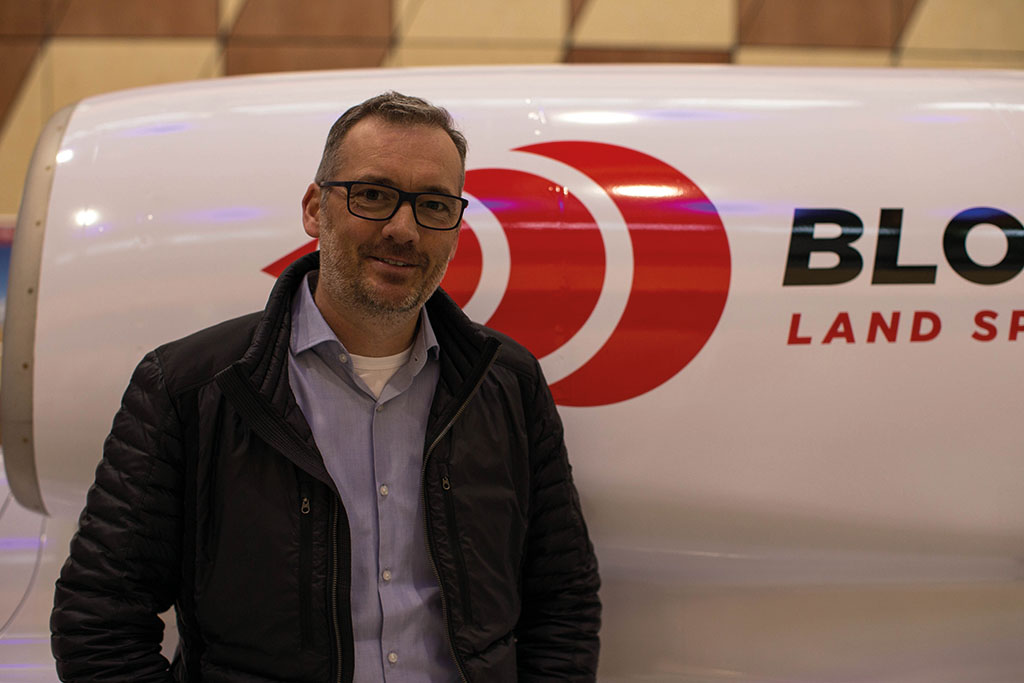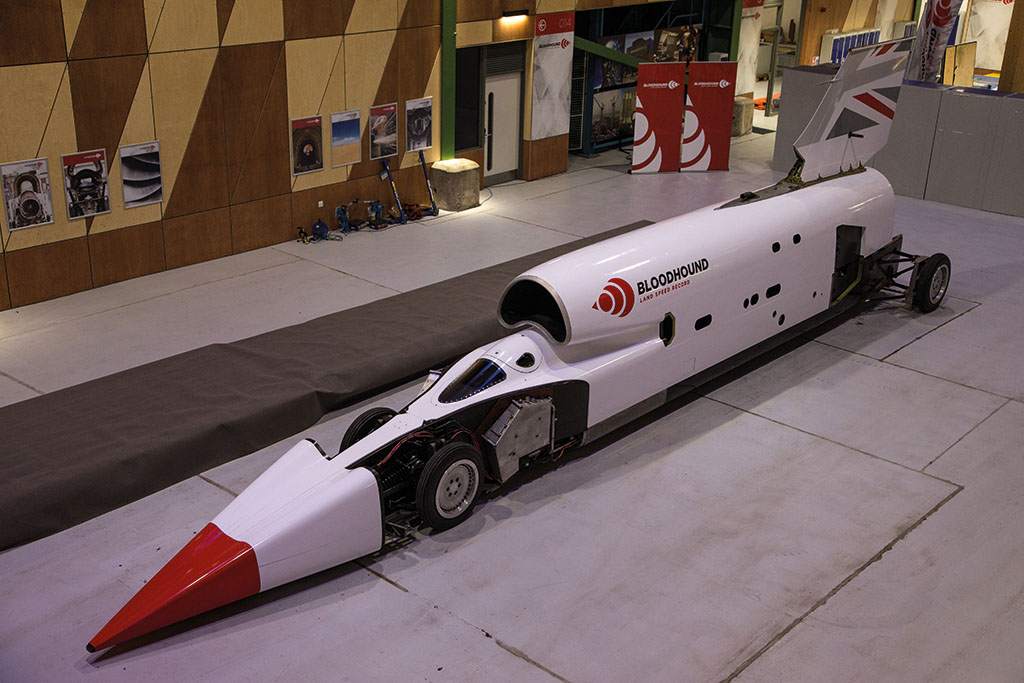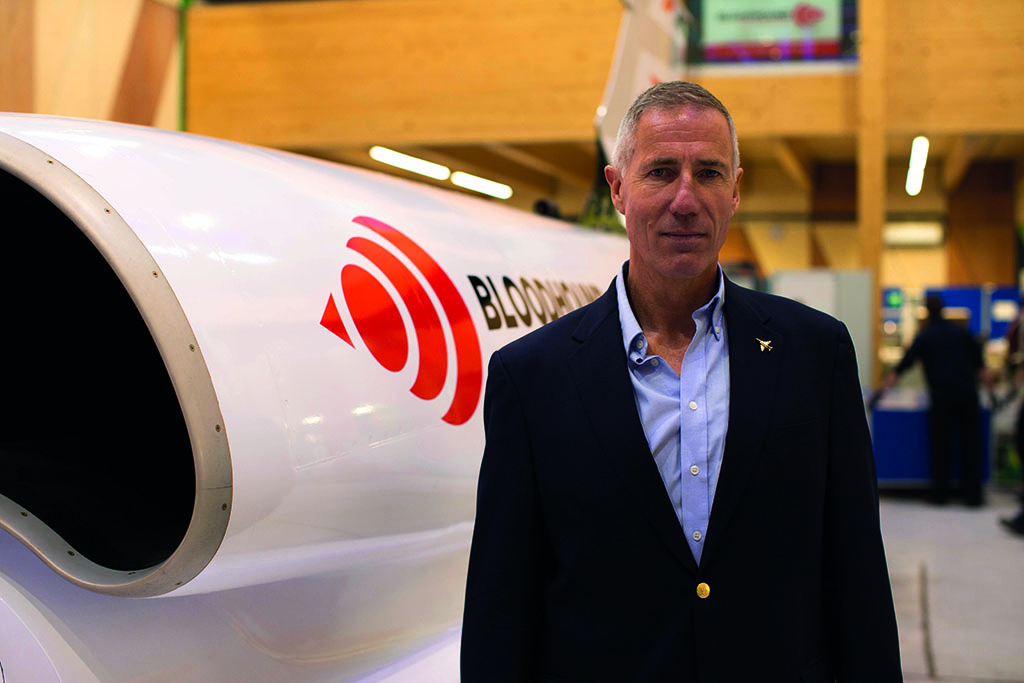Brits are back in the bid for a land-speed record, and RICHARD THOMAS has a good sniff around. And despite the recent trend in BV articles, this beast isn’t powered by electricity…
BRITISH entrepreneur and mechanical engineer Ian Warhurst is no stranger to speed.
He grew up around cars and engines in his family’s garage and haulage business. After studying Mechanical Engineering and Design, he bought Melett, a Yorkshire-based company that manufactures and supplies automotive parts — including turbochargers.

During Warhurst’s time at the helm, Melett expanded — in the UK and overseas. There was an office in Poland, a subsidiary in the US, and a manufacturing facility in China. In 2014, Warhurst and his wife were said to be worth more than £70m, most of which came from the value of the business.
In December 2017, Warhurst sold Melett to US transport engineering company Wabtec, for a sum that quickly burned a hole in his pocket. A little over a year later, he stepped in to rescue the Bloodhound land-speed record project, which had entered administration just 10 days earlier.
Recently relaunched as Bloodhound LSR, the project aims to beat the existing land speed record of 763mph, set in 1997 by former RAF pilot Andy Green, driving the Thrust SSC. The project was launched as Bloodhound SSC in 2008 by Richard Noble, the driver of the car that set a 1983 record of 633mph.

The project draws from different technologies. The main power source is a rocket supplied by Norwegian-Finnish company Nammo. The rocket is fed via a fuel pump powered by a Jaguar V8 car engine. And to get the car rolling from zero, there is the Rolls-Royce EJ200 jet engine from a Eurofighter Typhoon (on loan from the Ministry of Defence).
Bloodhound intended from the outset to inspire the next generation of engineers; it was Warhurst’s reason to get involved. A visit to a motor show at the NEC in Birmingham with his kids — and their excitement — inspired the whole project.
A registered charity set up alongside the Bloodhound project produces educational material for STEM (Science, Technology, Engineering and Maths) subjects: model-car building and racing, 3D printing, programming, design and practical experiments. There is even an experiment to measure the speed of sound using an old pair of headphones, a metre rule and a free piece of audio-editing software. Next time.
October 2017 saw the Bloodhound (the vehicle, not the organisation) tested “at low speed” in public. It reached 210mph on the runway at Newquay Airport in Cornwall. But then came funding issues, and Bloodhound was placed into administration in December 2018. Which is where Warhurst comes in.
In early December, Warhurst’s son sent him a text message about the project’s demise. Might he want to buy the Bloodhound? He got in touch with the administrators, who confirmed that the car had to be broken up to return that jet engine to the MOD. Turning such a vehicle into scrap touched a nerve in the Yorkshire businessman.
“I decided I should get involved and try and keep the project together in one ownership,” he said. With his team, he took a long, hard look at the financial state of the speed bid. He is now sure that it can be funded by sponsorship, and believes the project is commercially viable. The problem now is cash-flow — something he is willing to solve.
“I will provide the funding so the project can carry on month-on-month, so we can actually get to the goal as quick as we can,” he said. “That goal is to take the car down to South Africa.”
On South Africa’s Hakskeen Pan, in the northern Cape province, the Bloodhound team will conduct higher-speed runs. This time, 400 – 500mph (644 – 804 km/h), then a crack at the land-speed record — and four figures for the first time.

Once again, Andy Green will be feeling the thrust in the driver’s seat. “We’re all very excited,” he said.




























